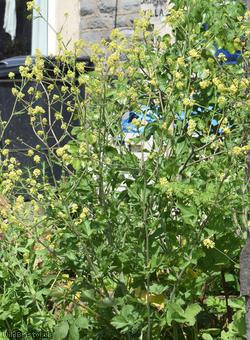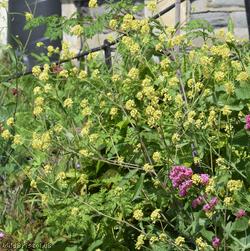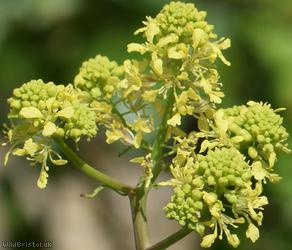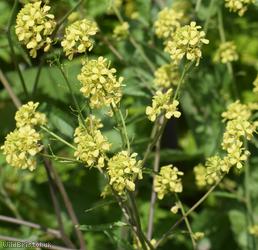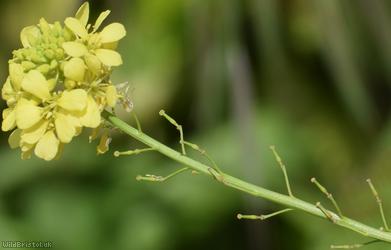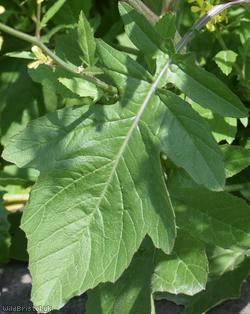Bastard Cabbage - Rapistrum rugosum
Favourite Photos
Species Description
Widespread and fairly frequent in the South, becoming more scattered in the North. It is increasing. Habitat includes: Disturbed places such as arable fields, roadside verges, tips, open grassland etc. Growing habit: Annual. Hight: Up to 1 m. Flowers: May to September.
Stace 4:
Rapistrum rugosum (L.) Bergeret (R. hispanicum (L.) Crantz, R. orientale (L.) Crantz, R. rugosum ssp. orientale (L. Arcang., ssp. linnaeanum (Coss.) Rouy & Foucaud) - Bastard Cabbage.
Erect annual to 1m, hispid at least below; fruit 3-12mm; distal segment abruptly narrowed into (0.8)1-3.5(5)mm style, ribbed and rugose, glabrous to densely hispid; proximal segment usually much narrower than distal, mostly 0(-1)-seeded; (2n=16). Neophyte-naturalised; casual in waste and arable land, on tips, waysides and open grassland (where it can become invasive); frequent and increasing in South & Central Britain and Channel Islands, naturalised in parts of South England and in South East Ireland, scattered North to Scotland; South Europe. Fruits very variable in relative sizes of pedicel and 2 segments, hairiness and degree of sculpturing, but the variants are probably not worth more than vars. All or most of our plants are referable to ssp. linnaeanum, with long thin appressed pedicels (1.5-5 x 0.3-0.7mm) and seedless lower fruit segments.
